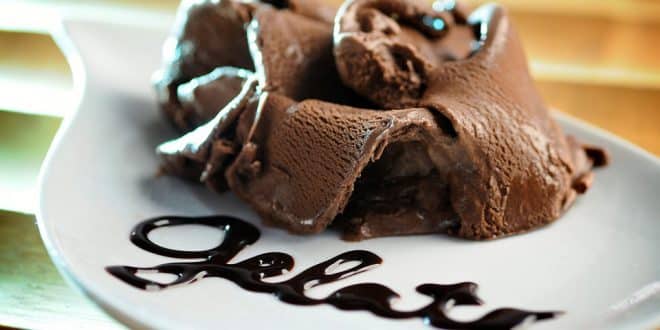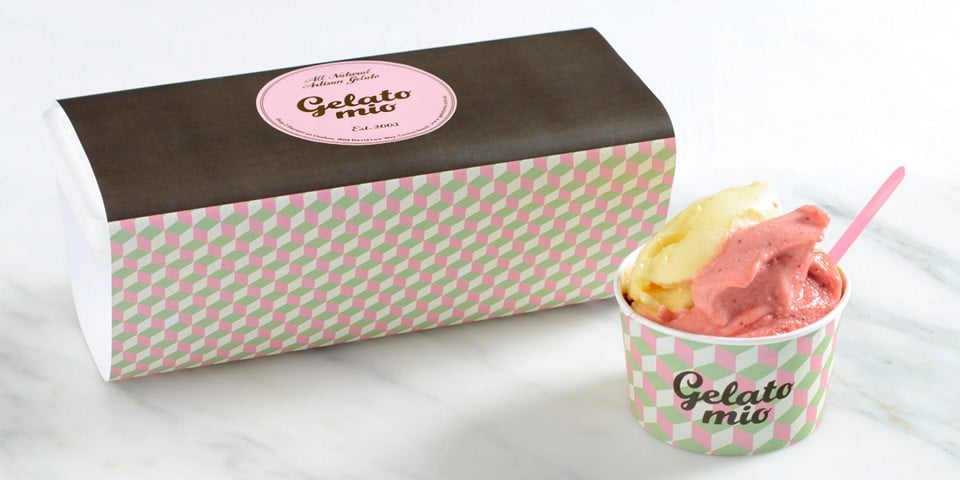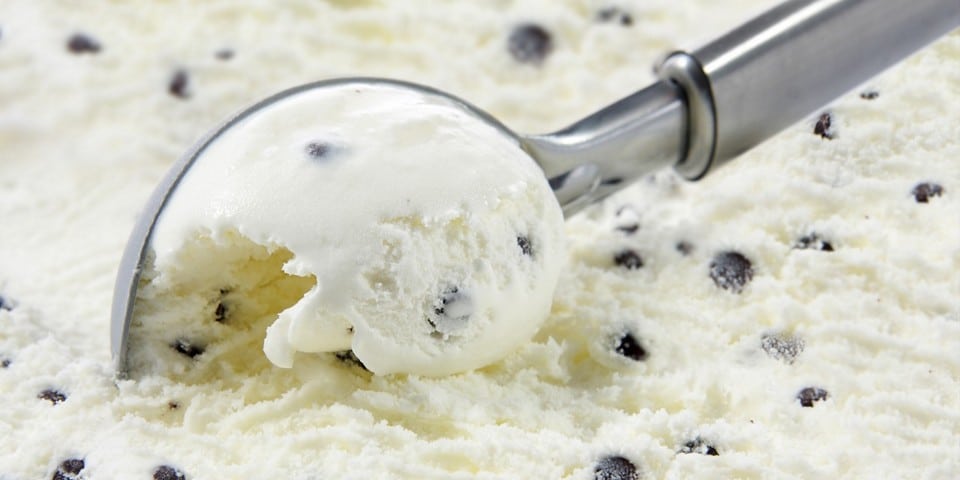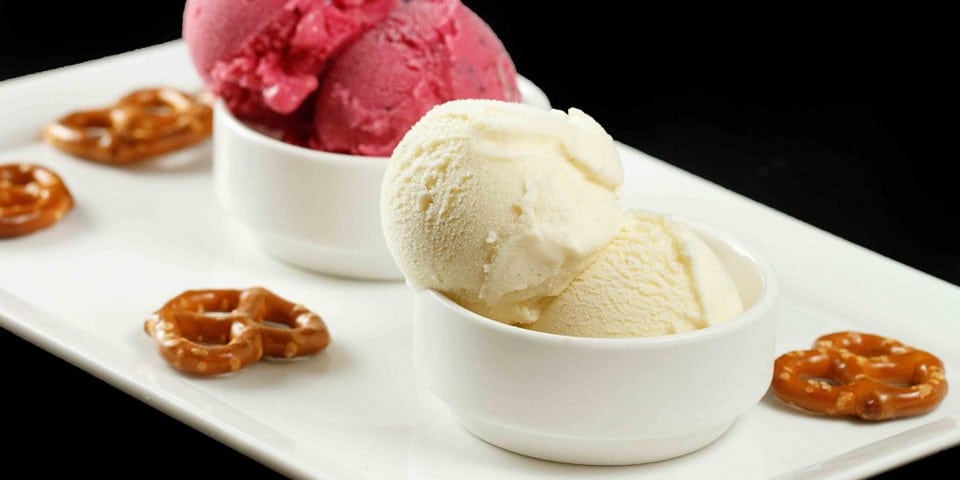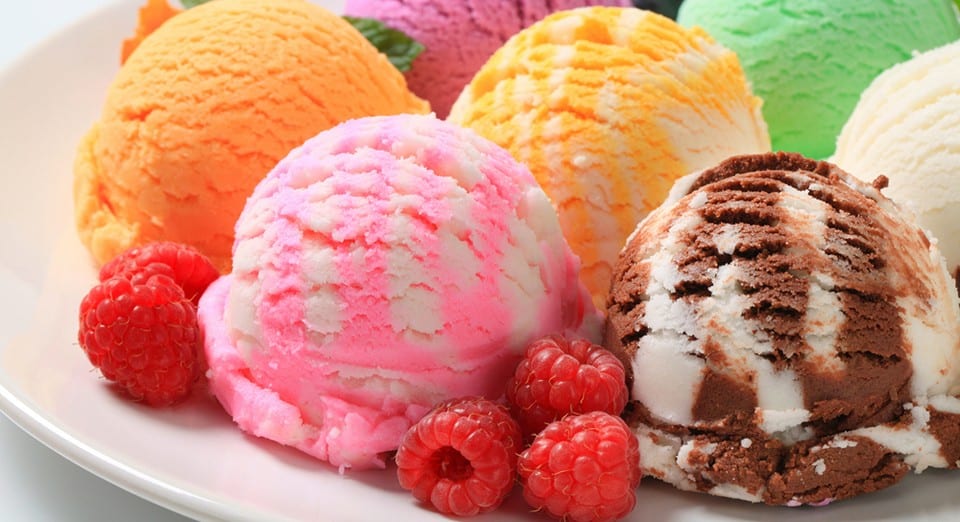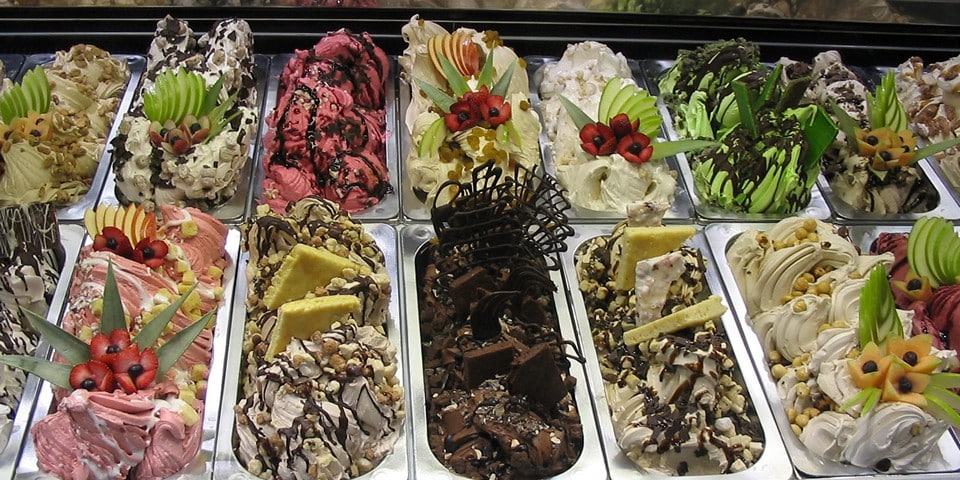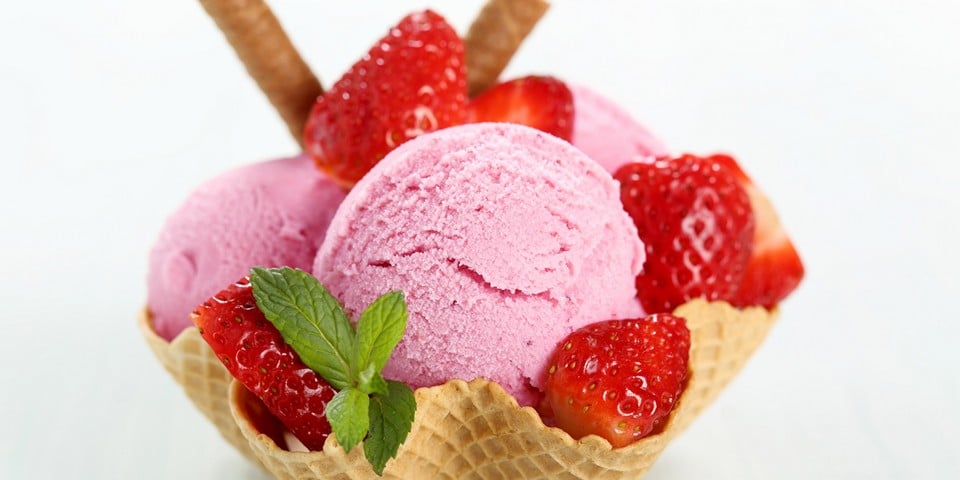It has been featured in cartoons and films. Singers sing songs about this dessert in many countries worldwide. And, finally, people do love it all over the globe, young and old. All this, undoubtedly, is about “Ice Cream.”
And if it’s Gelato – Italian ice cream, there are no equals to it in any corner of the world. It’s a pleasant coolness, saving you from the summer heat, and a milky veil, complementing a cup of coffee on a winter evening with the family.
Real gelato masters make it by hand, giving it their unique twist.
Page Contents
The History of Gelato
The history of gelato is so ancient that it’s nearly impossible to find out when it first came into being. All that can be said is that its ancestors differ significantly from the modern versions.
The first lovers of frozen desserts were Neanderthals, who lived about 35,000 years ago. They hid berries and fruits in the snow to preserve them. Later civilizations learned to freeze milk during the winter months.
Over time, the first flavorings appeared – honey, fruit, and berry purees. Among ancient Romans, ice cream made from ice coated with a decent layer of honey from the Vesuvius and Etna volcanoes was popular.
In the 9th century, Arabs living in Sicily made ice cream from infusions of herbs and spices with sugar derived from cane. This mixture was placed in a container surrounded by ice and salt, resulting in a delicious sherbet for that time.
The grand traditions of gelato were established during the Renaissance period in Italy (14th-16th centuries). The famous Medici family sponsored competitions among cooks for the best-frozen dessert. A farmer named Ruggeri won the contest by preparing ice cream from sweet fruit juice and ice (similar to today’s sorbet). News of his talent spread quickly. Catherine de Medici even invited the skilled cook to her wedding to the future king of France. She was convinced that only Ruggeri could compete with French chefs. However, some historians consider this to be nothing more than a beautiful legend.
In the late 1500s, the Medici family commissioned the famous artist and architect Bernardo Buontalenti to prepare a beautiful celebration for the arrival of the King of Spain. Using his culinary skills, the master greeted his majesty with a magnificent creamy frozen dessert. He prepared what we today call gelato. Buontalenti is considered the inventor of Italian ice cream.
How Gelato Became Famous in Europe
Francesco Procopio dei Coltelli made gelato famous all across Europe. Moving from Palermo to Paris, he opened a café, which later became a center of innovation. There, for the first time, ice cream was served in small glasses. The establishment enjoyed extraordinary success and served as the starting point for gelato’s journey across Europe.
Gelato first arrived in America in 1770, when Giovanni Basiolo brought the recipe to New York. At the time, there were two types of ice cream: one made from water and fruit, and the other made from milk with cinnamon, coffee, pistachios, or chocolate. In 1846, freezers were improved, freezing occurred with constant stirring. Thus, Americans received real gelato, which was no longer grainy but had a pleasant creamy consistency.
The year 1884 is considered the beginning of mass ice cream sales in Italy. With the advent of modern freezers, a new era of industrial preparation of gelato began. However, even today, the original and most delicious Italian ice cream is made by hand in special establishments – gelaterias.
1884 is considered the year when mass sales of ice cream began in Italy. With the advent of modern freezers, a new era of industrial gelato preparation began. However, even today, the original and tastiest Italian ice cream is made by hand in special establishments – gelaterias.
Ingredients – What Real Italian Gelato is Made of?
Did you know that all the ingredients for making gelato are probably already in your fridge? Italian ice cream is made exclusively from natural components, making it delicious and very healthy.
Milk and Cream
The gelato base is chosen depending on which version they plan to prepare. Water is the base for fruit sorbets, and milk is used to make creamy versions.
The best taste is ice cream from whole milk, but some manufacturers use low-fat (1-2%) or even fat-free raw materials. Milk helps to achieve a smooth, creamy texture and also increases the dessert’s resistance to melting. Its content in gelato is about 60%. Often manufacturers add a little dry milk, but this is by no means a trick. Its lactose absorbs free water, and the proteins give the mass a stable consistency. To give the taste a brighter milk aroma and get the most delicate texture, 5 to 20% cream is added to the gelato.
Modern manufacturers produce gelato based on soy milk for people suffering from lactose intolerance.
Sugar
Artisans add sugar to gelato not only to make it sweet. This ingredient helps lower the freezing temperature and increase viscosity. There are many different types of sugars, differing in their chemical composition:
- Sucrose (from cane);
- Lactose (from milk);
- Fructose (from fruit);
- Inverted sugar from glucose, honey, and corn syrup.
The original gelato uses cane sugar, which content ranges from 14 to 24%. It should be noted that inverted sugar is much sweeter than its counterparts. Therefore, when using it, the proportion of this ingredient in the dessert is noticeably reduced.
Gelato manufacturers strive to keep up with the times and offer options for people with any dietary features. Some companies produce ice cream with a sugar substitute.
Flavorings
Don’t be scared off by this intimidating word, producers flavor it exclusively with natural components. Vanilla, coffee, chocolate, hazelnut, and pistachios are added to the ice cream. Desserts with fruits (peach, lemon) and berries (raspberry, strawberry, blueberry, black currant) are very popular. They are added fresh, frozen, or in the form of fruit puree.
In industrial versions of gelato, artificial flavorings may still be used. This is how versions with the taste of tiramisu, yogurt, or exotic fruits appear for sale.
Egg Yolks, Stabilizers, and Emulsifiers
Egg yolks give gelato a denser, stretchier consistency. If the manufacturer doesn’t use them, they can legitimately add stabilizers and emulsifiers (albeit in minimal quantities). The former act as thickeners, while the latter prevents separation. Both of these components are biological.
Air
Surprisingly, air is a very important component of gelato. Air adds volume and smoothens the texture. It passes through numerous filters and is absolutely clean, hence it does not affect the taste of the dessert in any way.
How Authentic Gelato is Made
If in the past all stages of gelato preparation were strictly manual, now special machines help with some processes. Milk-based ice cream is prepared using the so-called hot method.
In the first stage, milk, sugar, and additives (stabilizers and emulsifiers) are dosed and mixed. In Italy, the addition of flavoring ingredients happens just before freezing.
Next comes the pasteurization of the mixture – a thermal treatment that kills pathogenic microflora but leaves all taste characteristics unchanged. The mass is heated to 82-85 degrees, constantly shaken for 3 minutes, and then cooled to 4 degrees in freezers. At this temperature, the product matures, which takes 6-12 hours.
At the next stage, natural flavorings are added, and the freezer switches to negative temperature mode for a few minutes. The mass is continuously stirred, and air is added to achieve the characteristic consistency.
The resulting gelato is stored in a chamber at a temperature of -18 degrees to ensure the correct structure and safety of the ice cream. The dessert is made in small batches with diverse flavors to provide gelateria customers with always fresh product.
Calories and Benefits of Gelato
The amount of calories in gelato directly depends on its ingredients. Milk ice cream without additives contains about 220 kcal per 100 g. If you prefer dessert with additives, you should know that each added component increases the caloric value. For instance, varieties with chocolate or nuts contain over 300 kcal per 100 g.
The least caloric are fruit sherbets based on water. They can boast only 130 kcal per 100 g of product.
Gelato is an excellent addition to the diet of any healthy person. Dairy varieties are a source of protein, calcium, phosphorus, and B vitamins. Furthermore, lactose found in milk facilitates better calcium absorption.
Ice cream with coffee or chocolate is a treasure trove of antioxidants (polyphenols). They fight against free radicals, which cause aging processes in cells. Cocoa also contains vitamin E – the main assistant of the human reproductive system.
The benefits and vitamin content of fruit gelato are determined by the berries and fruits that make up the dessert’s base. However, vitamin C is almost destroyed during the preparation process, so its activity in the product should not be taken into account.
Gelato is a great snack option if breakfast is long past, but it’s still not close to lunch. Scientists have proven that ice cream for the throat is a wonderful way to harden the tonsils, like a cold shower for the entire body. They recommend consuming it in small quantities, even in cold weather.
Varieties of Gelato and Their Differences
Depending on the production method, gelato is divided into:
- Gelato artigianale (so-called homemade ice cream);
- Gelato industriale (industrial variant).
Gelato artigianale is made in gelato shops directly before serving it to the client. It contains 6-10% fat. The air content can reach up to 35%. As a rule, all components are absolutely natural.
Gelato industriale differs in having a longer shelf life. It contains 8-12% fat. Italians call this ice cream “wind” because the amount of air in it is such that it constitutes a minimum of 20% of the dessert’s volume (often the figures reach up to 40%). Manufacturers can use colorings, stabilizers, and emulsifiers.
Italy is the only country in the world where ice cream covers 55% of the market! With an annually increasing demand for desserts, the industrial production of gelato with cheaper components is inevitable.
Depending on the ingredients used, gelato can be:
- Gelati al latte or milk ice cream;
- Gelati di frutta or fruit sherbet.
“Chocolate Gelato” Recipe
Italian singer Pupo’s famous 80’s hit “Gelato al cioccolato” sharply increased interest in this dessert. So, here we present homemade chocolate ice cream. You will need:
- 250 g of fresh cream;
- 150 g of milk;
- 150 g of dark chocolate;
- 150 g of sugar;
- 3 egg yolks;
- A pinch of vanilla or vanilla essence.
From kitchen helpers, you will need a saucepan with a thick bottom, a container for whipping yolks, a container for freezing, and a mixer.
Home Cooking
- Melt the chocolate with the cream and milk in a saucepan with a thick bottom. Whisk the egg yolks with sugar in a bowl until the mass lightens and becomes homogeneous.
- Pour the egg mixture into the saucepan. The heat should be minimal at this point. Stir well and wait until the mass heats up considerably, but do not bring it to a boil to avoid curdling the yolks. Remove the container from the heat, add vanilla, and stir again.
- Pour the gelato into a storage bowl and let it cool to room temperature. Then put it in the refrigerator for a few hours.
- Take out the ice cream and whip it with a mixer at minimum speed for 20 minutes. Turn off the device and delight your loved ones with homemade gelato al cioccolato to the invigorating rhythms of an Italian song!
FAQ about Italian Gelato
Where was gelato invented?
How many different gelato strains?
Is ice cream safe to eat during pregnancy?
Gelato, how to pronounce?
Why is gelato different?
What’s gelato made out of?
Why is gelato so good?
Which gelato is the best?
How much is gelato in Rome?
How healthy is gelato?
When is national gelato day?
How long does fresh gelato last?
Gelato is appreciated and loved in many countries around the world. Italian gelaterias, carefully preserving the traditions of making ice cream, will be able to please you with an original dessert at any time of the year. Live boldly, love naturally, travel beneficially and remember: “Hunger drives the wolf out of the forest, and man into the gelateria!”
 Italy for me From Italy with love
Italy for me From Italy with love

